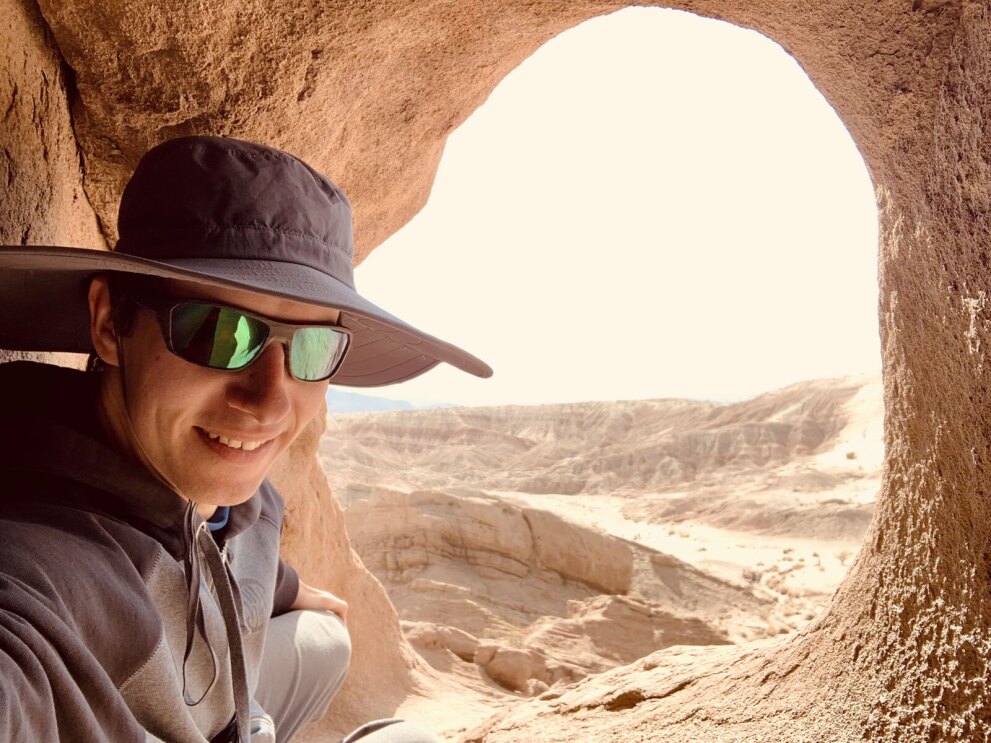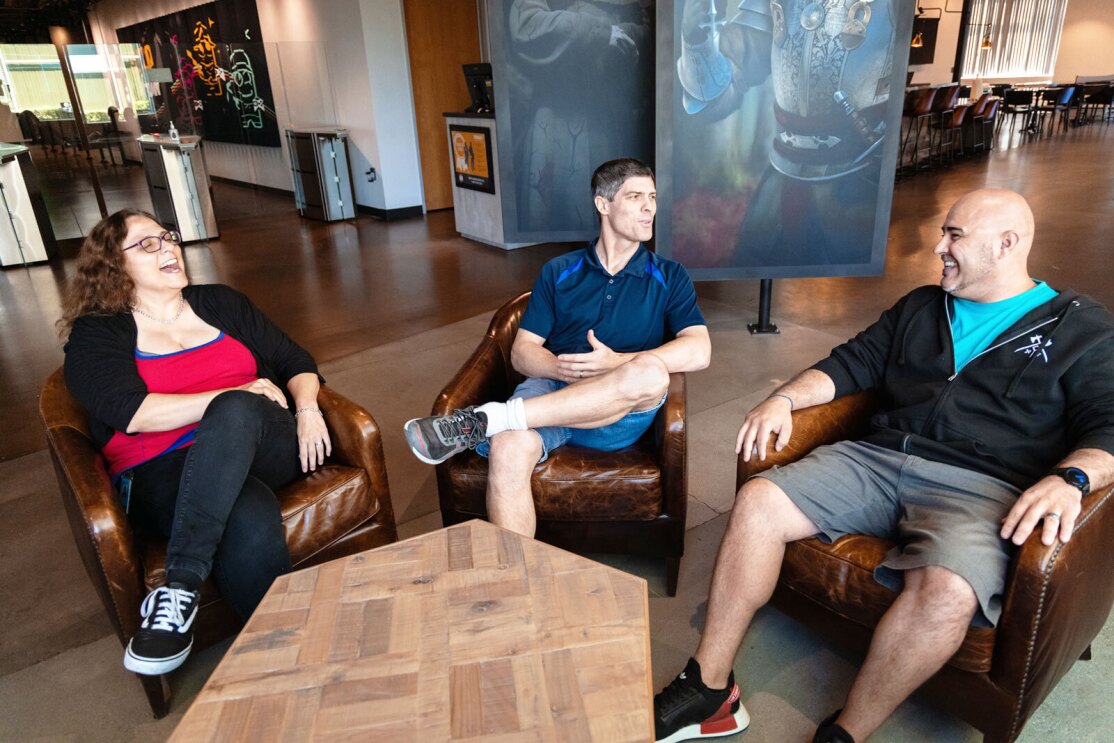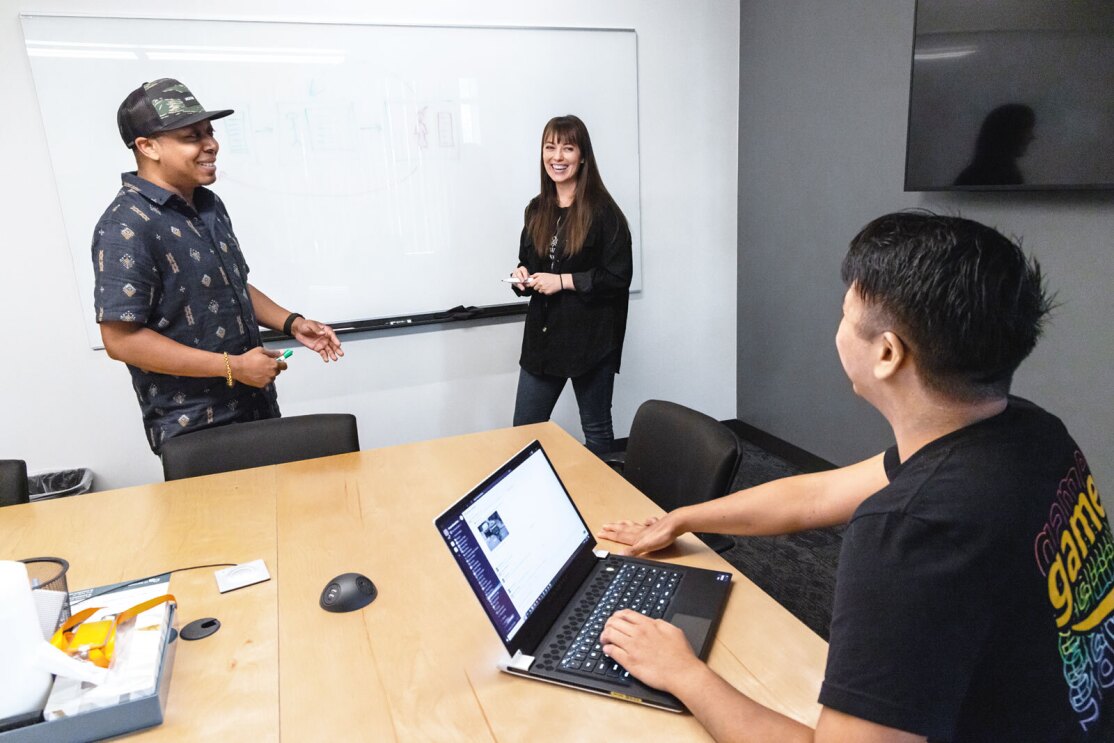New World launched in September 2021 to broad critical acclaim, quickly achieving a staggering milestone of more than 900,000 peak concurrent players, making it the fifth most played game by concurrent users in Steam’s history at the time of its launch.
Recently, New World celebrated its first anniversary, and in October, received its biggest content update yet with Brimstone Sands: an expansive, desert-themed zone featuring new enemies, a new territory, and all-new stories for players to experience. The launch of Brimstone Sands saw New World rejoin Steam’s top 10 most played PC games in October, and it continues to see strong player engagement today.
“Watching players experience the world for the first time was a pinnacle moment for me. I was so proud to play a part in making all of that come together.”
Rosie Strzalkowski
Lead world environment artist for New WorldAmazon Games has continued the momentum with the successful Western launch of Smilegate’s Lost Ark in 2022, along with recent news that it will publish both Bandai Namco Online’s Blue Protocol and the next installment of Crystal Dynamics’ Tomb Raider franchise. With an exciting future ahead for Amazon Games, we took a moment to catch up with some of the developers who brought the company’s first gaming hit to life.
How Amazon built a world-class AAA development team with a unique approach
It all began with Amazon’s 2014 acquisition of Double Helix Games, an Irvine, California-based studio founded in 2007 that was responsible for developing several popular games for various publishers, such as 2008’s Silent Hill: Homecoming (Konami), 2013’s Killer Instinct (Microsoft), and 2014’s Strider (Capcom).
An established studio with a rising profile and a collection of experienced and tenured game developers, it would be the foundation for what would become the Amazon Games studio in Orange County. The studio’s first project was an ambitious game and entirely new IP, New World: an open-world, massively multiplayer online role-playing game (MMORPG) featuring huge siege battles, daring expeditions, thrilling supernatural invasions, and a stunning and diverse natural setting.
Earning trust with Amazon’s first foray into games
 Jean-Edouard Miclot, audio director, on location at California’s Anza-Borrego Desert while capturing audio for use in New World’s Brimstone Sands update.
Jean-Edouard Miclot, audio director, on location at California’s Anza-Borrego Desert while capturing audio for use in New World’s Brimstone Sands update.Audio director Jean-Edouard Miclot was an employee of Double Helix Games when it was acquired by Amazon in 2014, having recently led audio design during the development of Killer Instinct and its post-launch support.
He embraced the challenge of building up a team and a studio structure capable of realizing Amazon’s ambitions for New World. He also appreciated that Amazon Games allowed its developers the space to learn, grow, and, critically, sometimes fail. That mindset went a long way toward earning the trust of both its developers and its customers, giving his team the time to build something that continually meets and exceeds player expectations.
“One of [Amazon’s] leadership principles is ‘Earn Trust,’” Miclot said. “Seeing that positivity from our leaders really helped us to keep that trust and stay on the ship.”
 Petra Beringer, Marcus Barber, and Jorge Oseguera catch up over a work break at the Amazon Games Orange County studio.
Petra Beringer, Marcus Barber, and Jorge Oseguera catch up over a work break at the Amazon Games Orange County studio.An Amazon approach to the art of game development
Rosie Strzalkowski, lead world environment artist for New World, got her start in the games industry during the early ‘90s, working on Sega Genesis titles such as The Lost World: Jurassic Park and Spider-Man. She eventually joined Sony Online Entertainment as the art director on EverQuest, going on to specialize in MMOs after contributing to EverQuest expansions, including EverQuest II, Free Realms, and EverQuest Next. Today, Rosie oversees the development of New World’s art.
Just like Miclot, Strzalkowski sees Amazon’s steadfast commitment to the “Earn Trust” principle as something of a differentiator in the industry.
“It’s vital for the game’s long-term health and for the team as well,” she said. “It’s tempting for companies to burn through trust at the expense of delivering results to serve a bottom line.”
A cooperative quest to deliver a hit game
New World quest designer Carrie Berg has been in games for 12 years and has worked in a variety of roles over that time. Her previous credits include the global phenomenon Minecraft and Niantic’s revolutionary location-based mobile game Ingress, with some of her work in the latter eventually showing up in its successor, the mobile megahit Pokémon GO.
Despite her focus on quest design, Berg values the opportunity to participate elsewhere on New World’s development process, while also welcoming fresh, outside perspectives into her own work.
“Our team at Amazon Games is really great with collaboration between groups,” she said. “It’s really nice to work together with different teams and have that experience where you’re not just siloed off on your own, doing your own thing, never interacting with the other groups that perhaps you need to interact with.”
Forging a new framework
EJ Samuel began his game-development career at EA Tiburon in Orlando, Florida back in 2007. There, he worked on several of the studio’s popular sports franchises, such as NCAA Football, Madden NFL, and NBA Live. After a two-and-a-half-year stint at Turtle Rock Studios in Lake Forest, California, where he worked as a UI designer on Evolve, he eventually joined the Amazon Games Orange County studio to support New World’s development as a senior design technologist.
 EJ Samuel (left), senior design technologist, collaborates with colleagues Kelly Knutson and Joseph Ignacio onsite at the Amazon Games Orange County studio.
EJ Samuel (left), senior design technologist, collaborates with colleagues Kelly Knutson and Joseph Ignacio onsite at the Amazon Games Orange County studio.“I was like, ‘Oh, this is a nice chance to be on the ground floor and guide the framework of how we will build UI,'” he explained.
The developers reflect on Amazon Games’ first gaming hit
The developers at the Orange County studio all have their own memories of their time creating and supporting the game. For quest designer Berg, it’s the pride felt in putting her own stamp on the game—in collaboration with several of her friends and teammates—by contributing to New World’s comprehensive lore in a variety of ways.
“[Senior level designer] David McKenzie and I went through and added descriptions for every location in the world, so that when you pulled up the map, it wouldn’t just say a place name,” Berg recalled. “It would give you a short little poem or fun phrase that would hint at what the place is about. And then more recently this summer, I worked with Austin [DeVries, audio lead] who is an amazing musician, and we went through and named all of the songs for when the music feature was launched.”
Despite her many years of experience in creating and launching several MMOs, Strzalkowski will never forget the moment when New World’s Aeternum—the virtual world her team had developed over several years—came to life as millions of players began to populate the game’s servers. “My favorite experience was jumping into the live server for the first time when it came out, and seeing the towns jam-packed with people talking with each other and doing funny things in the middle of town,” she said. “Watching players experience the world for the first time was a pinnacle moment for me. I was so proud to play a part in making all of that come together.”
Miclot is thankful for the opportunity to combine building New World’s sound library with cherished family memories. He occasionally brought his father with him to idyllic locations, where they recorded sound effects that have been immortalized in the game and experienced by millions of players all over the world. “When the game launched and there’s almost a million concurrent players, I told my dad, ‘Look, everybody is listening to the sounds we recorded,’” he explained. “That feeling of positivity—when people reacted so well to the sound—and, at the same time, I’m connected to my memory of spending time with my dad in the forest. This was a transcending experience for me that was better than therapy.”
Trending news and stories
- Amazon unveils 7 new robots powering faster, safer deliveries: Go inside our most innovative delivery station yet
- Introducing Vulcan: Amazon's first robot with a sense of touch
- This new AI tech will make sorting packages easier for Amazon's delivery station employees
- 15 photos from Project Kuiper's first launch of low Earth orbit satellites










